I am trying to make a unipolar stepper motor driver circuit. As a development landmark, I am trying to first run LEDs using the driver. Attached is my circuit.
My 555 timer generates regular pulses for the decade counter. The outputs (0-3) of the decade counter is connected to LEDs. Till this point, this works good. All LEDs light up one at a time. Output 4 of the counter feeds back to reset button as my stepper motor has just 4 inputs.
My stepper motor takes +ve on the common wire and needs to get -ve connection on the other 4 wires. Hence, I need to use transistors to connect the -ve of the power rail to the stepper motor.
But when I insert NPN transistors in place of the LEDs, have the output of decade counter fed into transistor base and have the LEDs connected between the collector and positive supply with emitter connected to negative supply, the transistor does not switch on.
What could I be doing wrong? I am using the following components -
12 V DC Supply
555 Timer
4017B Decade counter
2n2222 NPN Transistors
Various resistors between 1K to 10K.
In order to make sure the transistor is in good state, I inserted it into a different bread board. Then connected LED between collector and +ve voltage, connected emitter to -ve and then connected base with 220, 10K and 470 K resistors to +ve. It works. So looks like the transistor is in a good state, its just that the 4017 output is unable to drive it.

